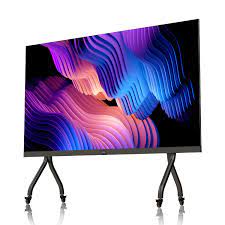
Introduction:
In the realm of visual communication, LED display screens have revolutionized the way information is disseminated, advertisements are showcased, and events are experienced. These vibrant, dynamic panels have become ubiquitous, adorning city skylines, stadium facades, shopping malls, and even our living rooms. Their versatility, energy efficiency, and unparalleled brightness have made them the preferred choice for businesses, advertisers, and entertainers alike. Let’s delve into the world of LED display screens, exploring their history, technology, sightled Transparent LED display, and future prospects.
A Brief History:
The genesis of LED (Light Emitting Diode) technology dates back to the early 1960s. Initially, LEDs were primarily used as indicator lights in electronic devices due to their low power consumption and durability. However, advancements in semiconductor technology paved the way for the development of larger and more powerful LEDs suitable for display purposes. The first LED display screen, albeit rudimentary by today’s standards, emerged in the 1970s, featuring simple alphanumeric characters.
The Evolution of LED Display Screens:
Over the decades, LED display screens have undergone a remarkable evolution, driven by advancements in materials science, semiconductor technology, and display engineering. Modern LED panels boast astonishing resolutions, brightness levels, and color reproduction, offering viewers an immersive visual experience. One of the key breakthroughs in LED display technology was the development of surface-mounted device (SMD) LEDs, which enabled tighter pixel pitches, higher resolutions, and improved reliability.
Today, LED display screens come in various form factors, including traditional flat panels, curved displays, cylindrical columns, and even flexible screens that can be bent and shaped to fit unconventional spaces. Furthermore, the integration of smart features, such as wireless connectivity, remote management, and real-time content updates, has enhanced the versatility and usability of LED displays across diverse applications.
Applications Across Industries:
The versatility of LED display screens has made them indispensable across a myriad of industries:
- Advertising and Marketing: LED billboards and digital signage have become ubiquitous in urban landscapes, captivating audiences with dynamic content and vibrant visuals. Advertisers leverage the flexibility of LED displays to deliver targeted messages, promotions, and brand narratives with unparalleled impact.
- Entertainment and Events: From concerts and sporting events to theme parks and museums, LED display screens serve as the canvas for immersive multimedia experiences. Their high refresh rates, seamless integration, and scalability make them ideal for creating breathtaking visuals and captivating audiences in live entertainment settings.
- Retail and Hospitality: In retail environments, LED displays are used to enhance the ambiance, engage customers, and showcase products with stunning visuals. From storefront displays to interactive kiosks, LED screens play a crucial role in attracting foot traffic and driving sales. Similarly, in the hospitality sector, LED displays are employed for wayfinding, information dissemination, and guest entertainment.
- Education and Corporate Communication: LED display screens are increasingly being integrated into classrooms, lecture halls, and corporate boardrooms to facilitate dynamic presentations, video conferencing, and collaborative learning. Their high visibility and interactivity foster engagement and knowledge retention among students and professionals alike.
Future Prospects and Innovations:
As technology continues to advance, the future of LED display screens looks brighter than ever. Emerging trends such as mini-LED and micro-LED technology promise even higher resolutions, improved contrast ratios, and greater energy efficiency. Additionally, developments in augmented reality (AR) and virtual reality (VR) are expected to further blur the lines between physical and digital environments, opening up new possibilities for immersive storytelling and interactive experiences.
Furthermore, the integration of artificial intelligence (AI) and machine learning algorithms will enable LED display screens to adapt and personalize content in real-time based on viewer demographics, preferences, and environmental conditions. This convergence of technologies holds the potential to revolutionize the way we interact with digital content and redefine the concept of visual communication in the years to come.
Conclusion:
In conclusion, LED display screens have transcended their humble origins as simple indicator lights to become indispensable tools for visual communication and storytelling across diverse industries. Their versatility, scalability, and immersive capabilities continue to push the boundaries of creativity and innovation, shaping the way we experience information, entertainment, and advertising in the digital age. As technology continues to evolve, the future of LED display screens holds immense promise, paving the way for even more captivating and transformative experiences yet to be imagined.